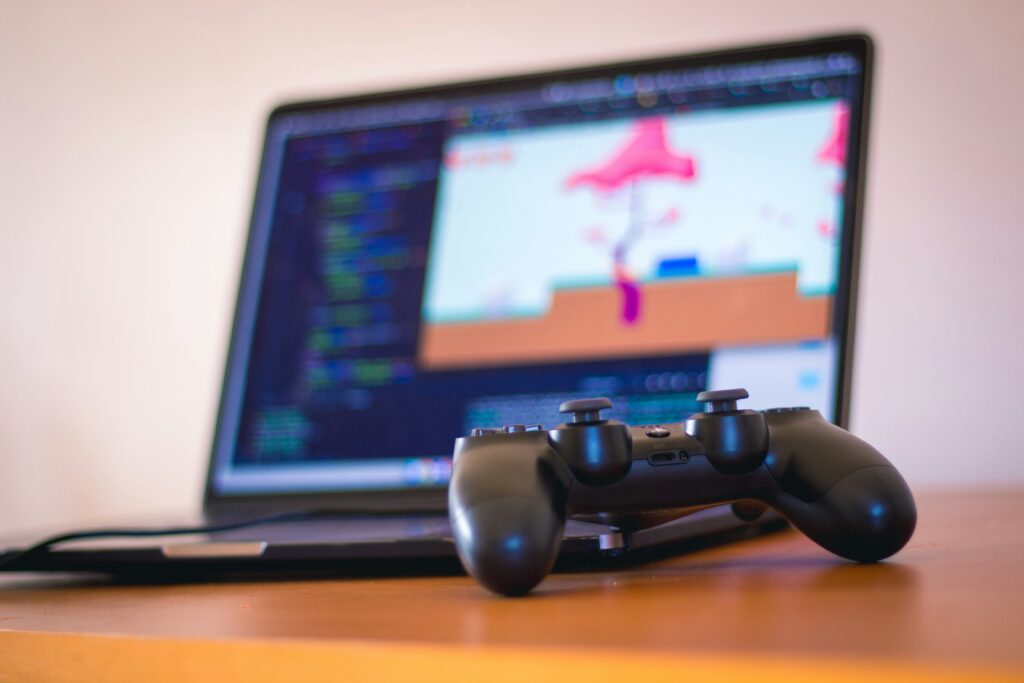What Tools Are Essential For Game Asset Creation?
In the rapidly evolving world of game development, the tools, software, and techniques we use to create immersive and engaging game assets are crucial. As we dive into “What Tools Are Essential For Game Asset Creation,” we’ll explore the must-have tools that will equip us with the capabilities to craft stunning graphics, compelling characters, and intricate environments. From industry-standard 3D modeling programs to powerful texturing tools and efficient project management software, we’ll uncover everything necessary for us to bring our creative visions to life and stay ahead in this competitive field. What tools are essential for game asset creation? Whether we’re beginners or seasoned developers, navigating the array of tools available can be a daunting task. Each tool has its own strengths, and depending on what we aim to create—be it characters, environments, or animations—our needs may vary. Let’s delve into the essential tools that can elevate our game asset creation to new heights.
3D Modeling Software
3D modeling software serves as the backbone of game asset creation, allowing us to create detailed characters, structures, and environments. Here are some key tools:
Blender
Blender is an open-source 3D modeling software that offers robust capabilities for creating various assets.
- Features: Sculpting, texturing, animation, and rendering.
- Pros: Free, customizable with add-ons, frequent updates.
- Cons: Steeper learning curve for beginners.
Autodesk Maya
Maya is a widely-used software in both the gaming and animation industries.
- Features: Advanced modeling, UV mapping, texturing, rigging, and animation.
- Pros: Professional-grade tool, extensive community, comprehensive feature set.
- Cons: Expensive subscription model, high system requirements.
ZBrush
ZBrush specializes in high-resolution digital sculpting.
- Features: Advanced sculpting techniques, texturing, and generating normal maps.
- Pros: Ideal for detailed character modeling, efficient workflow for sculpting.
- Cons: Unique interface takes time to get used to, not suitable for all types of modeling.
| Tool | Primary Use | Pros | Cons |
|---|---|---|---|
| Blender | General 3D Modeling | Free, frequent updates, customizable | Steep learning curve |
| Autodesk Maya | Professional 3D Modeling | Extensive features, professional-grade | Expensive, high system requirements |
| ZBrush | Digital Sculpting | Ideal for character modeling, efficient workflow | Unique interface, not for general modeling |
2D Art and Texturing Software
2D art plays a crucial role in texturing 3D models and creating user interface elements.
Adobe Photoshop
Photoshop is the industry standard for 2D graphics and texturing.
- Features: Layer-based editing, myriad tools for drawing and texturing.
- Pros: Extensive feature set, large user community.
- Cons: Costly subscription, resource-intensive.
GIMP
GIMP is an open-source alternative to Photoshop.
- Features: Layer editing, various texturing tools.
- Pros: Free, lightweight, customizable with plugins.
- Cons: Less polished UI, fewer advanced features.
Substance Painter
Substance Painter specializes in texturing 3D models with realistic textures.
- Features: Real-time 3D painting, smart materials.
- Pros: High-quality output, intuitive interface.
- Cons: Paid software, can be resource-heavy.
| Tool | Primary Use | Pros | Cons |
|---|---|---|---|
| Adobe Photoshop | 2D Graphics/Texturing | Extensive features, community | Costly, resource-intensive |
| GIMP | 2D Graphics/Texturing | Free, customizable | Less polished UI |
| Substance Painter | Texturing 3D Models | High-quality output | Paid software, resource-heavy |

Animation Software
Animating 3D models breathes life into our creations. The following tools are critical for this.
Autodesk Maya
Mentioned earlier, Maya is also a potent tool for animation.
- Features: Rigging, keyframe animation, motion paths.
- Pros: Comprehensive rigging and animation tools, industry-standard.
- Cons: Expensive, complexity requires time to master.
Blender
Blender’s animation capabilities are continually improving.
- Features: Keyframe animation, rigging, motion tracking.
- Pros: Free, similarly powerful to other high-end tools.
- Cons: Interface and tools can be overwhelming for beginners.
Spine
Spine is ideal for creating 2D animations for games.
- Features: Bone rigging, real-time animation.
- Pros: Specialized for 2D game animations, user-friendly.
- Cons: Limited to 2D, requires purchase.
| Tool | Primary Use | Pros | Cons |
|---|---|---|---|
| Autodesk Maya | 3D Animation | Comprehensive tools | Expensive, complex |
| Blender | 3D Animation | Free, improving capabilities | Overwhelming interface |
| Spine | 2D Game Animation | Specialized for 2D, user-friendly | Limited to 2D, requires purchase |
Game Engines
The choice of game engine can significantly impact the asset creation process and the final product.
Unity
Unity is one of the most popular game engines, supporting both 2D and 3D creations.
- Features: Versatile asset pipeline, strong community, extensive plugin marketplace.
- Pros: Cross-platform support, user-friendly.
- Cons: Some features locked behind paid tiers, steep learning curve for advanced features.
Unreal Engine
Unreal Engine is known for high-quality graphics and extensive capabilities.
- Features: Advanced rendering capabilities, integrated development environment.
- Pros: High-quality visuals, free to use until commercial release.
- Cons: High system requirements, complex for beginners.
Godot
Godot is an open-source game engine with growing popularity.
- Features: Lightweight, user-friendly, supports 2D and 3D.
- Pros: Free, flexible, active community.
- Cons: Less mature than Unity or Unreal, fewer high-end capabilities.
| Game Engine | Primary Use | Pros | Cons |
|---|---|---|---|
| Unity | Versatile Game Development | Cross-platform, user-friendly | Some features behind paid tiers |
| Unreal Engine | High-Quality Graphics | High-quality visuals, free to use | High system requirements |
| Godot | Lightweight Development | Free, flexible | Less mature, fewer high-end capabilities |

Audio Tools
Sound and music are essential components of the gaming experience, making audio tools equally vital.
Audacity
Audacity is a free, open-source audio software for recording and editing sounds.
- Features: Multi-track editing, various effects.
- Pros: Free, user-friendly, extensive plugins.
- Cons: Basic interface, lacks some advanced features.
FL Studio
FL Studio is a professional-grade music production environment.
- Features: Extensive library of sounds, advanced editing tools.
- Pros: High-quality output, frequent updates.
- Cons: Paid software, steep learning curve for beginners.
Wwise
Wwise is an industry-standard middleware for integrating audio into a game.
- Features: Real-time mixing, spatial audio.
- Pros: High-quality integration, used by professionals.
- Cons: Requires learning, free version with limitations.
| Tool | Primary Use | Pros | Cons |
|---|---|---|---|
| Audacity | Audio Recording/Editing | Free, user-friendly | Basic interface, lacks advanced features |
| FL Studio | Music Production | High-quality output, extensive library | Paid software, steep learning curve |
| Wwise | Audio Integration into Games | Professional-grade, high-quality integration | Requires learning, limited free version |
Version Control Systems
Collaborating on game asset creation demands robust version control systems to track changes and coordinate efforts.
Git
Git is a widely-used version control system for tracking changes in our projects.
- Features: Branching, merging, distributed version control.
- Pros: Free, ubiquitous, integrates with many platforms.
- Cons: Command-line interface can be daunting, more suited for text files.
Perforce
Perforce (Helix Core) is often used in larger game development studios.
- Features: Centralized version control, strong binary file support.
- Pros: Excellent for large teams, handles large binary files well.
- Cons: Expensive, can be overkill for small projects.
SVN (Apache Subversion)
SVN is another version control system that is easier to use compared to Git.
- Features: Centralized version control, directory versioning.
- Pros: Easier for newcomers, integrates well with many IDEs.
- Cons: Centralized nature can be limiting, less flexible than Git.
| Tool | Primary Use | Pros | Cons |
|---|---|---|---|
| Git | Version Control | Free, ubiquitous | Command-line can be daunting |
| Perforce | Large Team Projects | Excellent for large teams | Expensive, overkill for small projects |
| SVN | Version Control | Easier for newcomers, centralized | Less flexible than Git |

Asset Management Tools
Proper asset management is crucial for organizing and optimizing our workflow.
Trello
Trello provides a visual way to manage game asset tasks and progress.
- Features: Kanban boards, collaboration features.
- Pros: User-friendly, integrates with other tools.
- Cons: Limited features in free version, not specialized for game development.
Asana
Asana is another project management tool with robust capabilities.
- Features: Task assignments, timeline views.
- Pros: Extensive feature set, easy to use.
- Cons: Paid features can be expensive, not game-centric.
Miro
Miro supports collaborative brainstorming and planning.
- Features: Infinite canvas, various templates.
- Pros: Excellent for concepting and planning, real-time collaboration.
- Cons: Can be overwhelming with too many elements, costly features.
| Tool | Primary Use | Pros | Cons |
|---|---|---|---|
| Trello | Task Management | User-friendly, collaborative | Limited features in free version |
| Asana | Project Management | Extensive features, user-friendly | Paid features can be expensive |
| Miro | Concept and Planning | Excellent for real-time collaboration | Overwhelming with too many elements |
Documentation Tools
Documenting our processes and assets ensures our projects can be maintained and expanded upon easily.
Notion
Notion is an all-in-one workspace that supports documentation.
- Features: Databases, markdown support, collaborative editing.
- Pros: Highly versatile, integrates with other tools.
- Cons: Free version has limitations, can be complex to set up.
Confluence
Confluence by Atlassian is tailored for project documentation.
- Features: Collaborative spaces, extensive templates.
- Pros: Integrates well with other Atlassian products, robust features.
- Cons: Costly for full features, may be too robust for small teams.
Google Docs
Google Docs is a simple yet effective tool for documentation.
- Features: Real-time collaboration, cloud storage.
- Pros: Free, easy to use, widely accessible.
- Cons: Limited advanced features, depends on internet access.
| Tool | Primary Use | Pros | Cons |
|---|---|---|---|
| Notion | All-in-One Documentation | Versatile, integrates well | Free version limits, complex setup |
| Confluence | Project Documentation | Robust features, integrates with other Atlassian products | Costly, may be too robust |
| Google Docs | Simple Documentation | Free, easy to use | Limited advanced features, internet dependent |
Conclusion
Choosing the right tools for game asset creation is crucial for smooth development. Each tool offers unique advantages suited to different aspects of asset creation, from 3D modeling and animation to texturing and sound design. It’s important for us to explore these tools, understand their features, and select the ones that align with our project requirements and workflow.
By leveraging these essential tools, we can enhance our game asset creation process, bringing our creative visions to life more effectively and efficiently. Happy creating!




